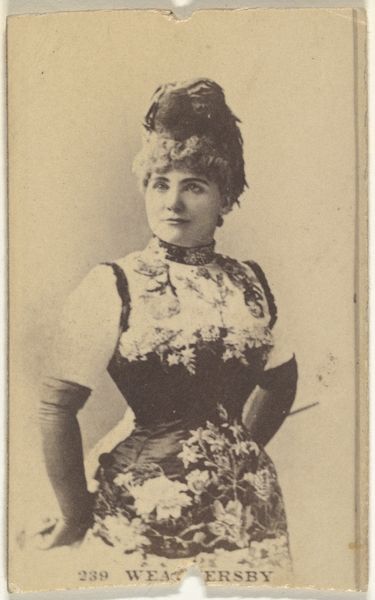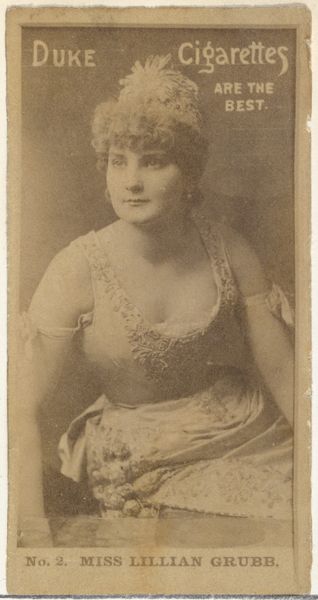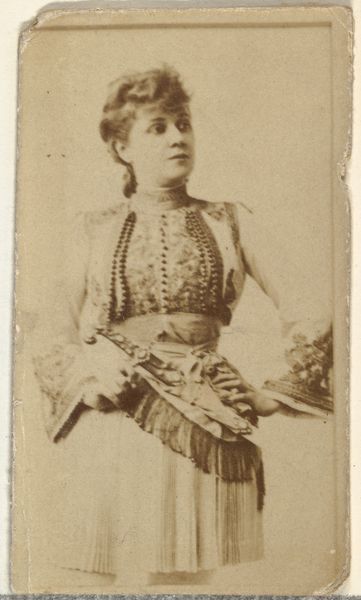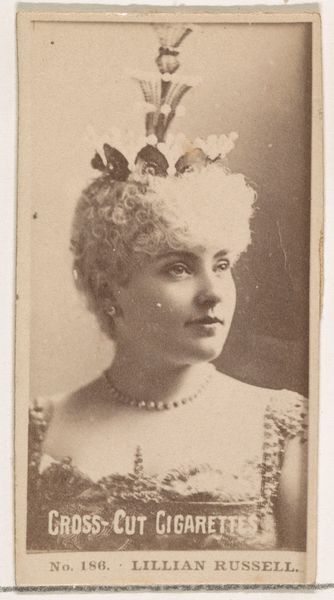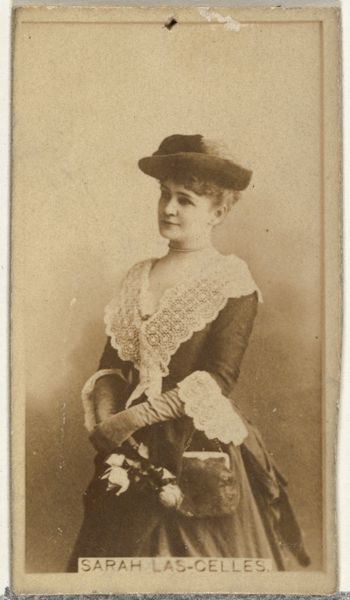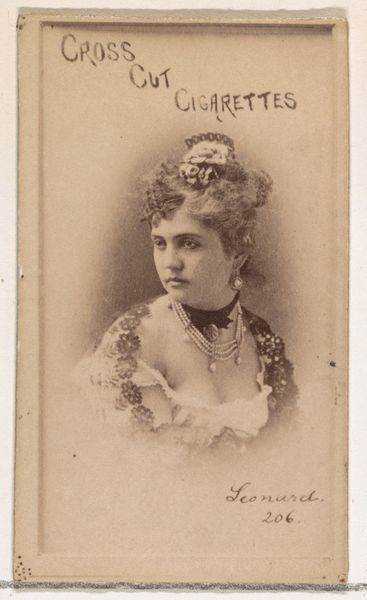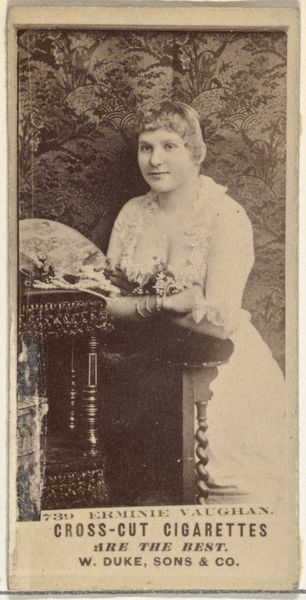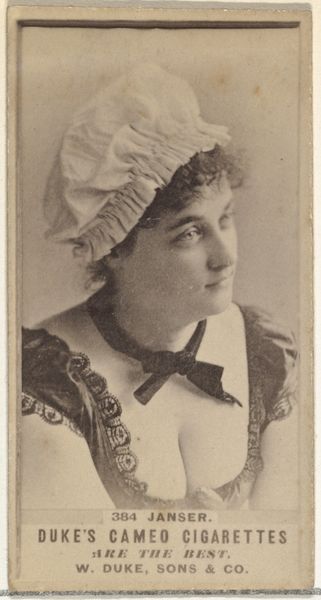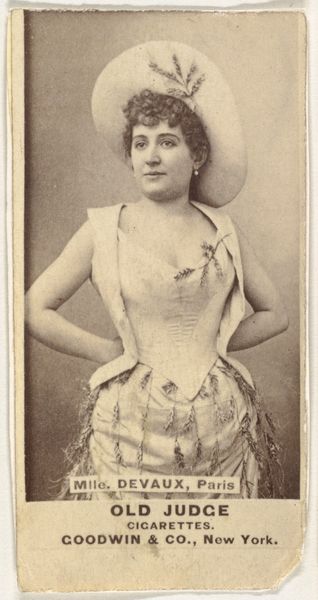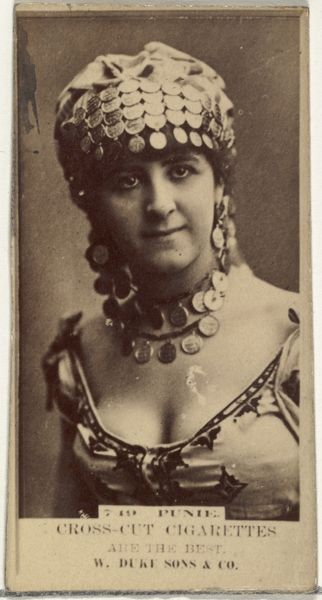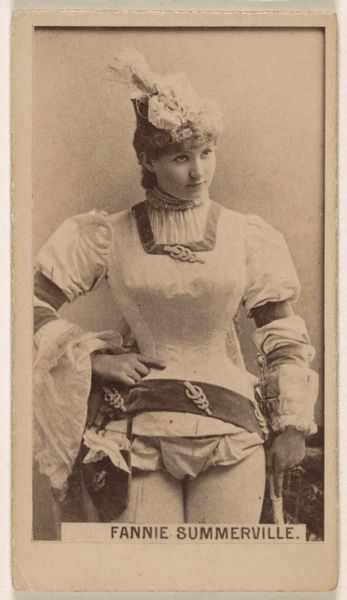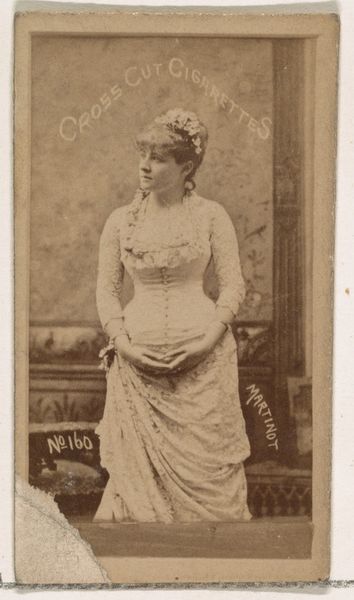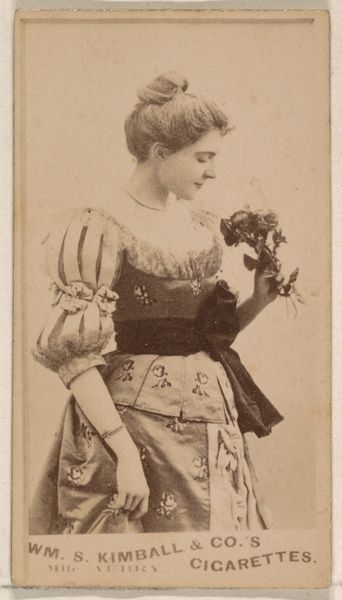
Eliza Weathersby, from the Actresses series (N190) issued by Wm. S. Kimball & Co. 1889
0:00
0:00
drawing, print, photography
#
portrait
#
drawing
# print
#
photography
Dimensions: Sheet: 2 1/2 × 1 5/16 in. (6.3 × 3.3 cm)
Copyright: Public Domain
Editor: This is Eliza Weathersby, a print from the Actresses series by William S. Kimball & Company, dating back to 1889. It feels very much like a time capsule, a preserved image of a woman from a bygone era. What catches your eye? How would you interpret its form and materiality? Curator: Immediately, I observe the strict geometry imposed upon the figure by the corset. This structure contrasts vividly with the floral patterns adorning both the dress and what appears to be the background—or is it part of her attire? The interplay between the rigid silhouette and the organic forms creates a visual tension. Consider the implications of this contrast. Editor: It’s like a battle between nature and artifice playing out on her body. But is it a battle, or a careful harmony? I find my eye darting between the woman's calm, centered face and the wild explosion of florals. Curator: Precisely. Let's delve further into the composition. Note how the artist utilizes a limited tonal range, emphasizing subtle gradations in light and shadow. This careful manipulation lends the image a certain depth and three-dimensionality, even within the constraints of the print medium. What effect does the absence of vibrant color have on your interpretation? Editor: It brings an emphasis on texture. I hadn't really noticed before how much information is communicated through the textures, not just in her clothing but even in the subtle gradations of light and shadow. I guess it forces you to examine the surface more closely, and think about the tactile qualities of the work even though you can’t physically touch it. Curator: Indeed. This careful control of form and texture transforms a commercial object—a cigarette card, after all—into a study of contrast and delicate composition. An object lesson, perhaps, in seeing beauty even in utilitarian artifacts. Editor: I now recognize the interplay between control and expression in what at first glance seemed to be just a historical artifact. Thanks for your insights!
Comments
No comments
Be the first to comment and join the conversation on the ultimate creative platform.
